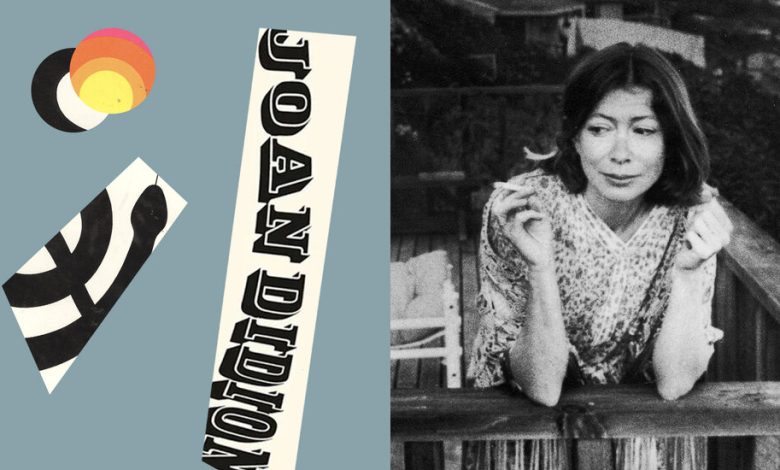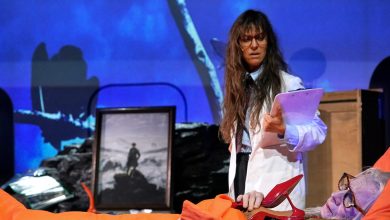The Essential Joan Didion

The Joan Didion many people know is constructed from a few artifacts the real writer left behind when she died in 2021. There’s her much-imitated (and sometimes parodied) 1967 essay “Goodbye to All That,” about leaving New York. There’s the packing list enumerated in her essay “The White Album,” written between 1968 and 1978, which is sometimes cited as aspirational, even instructional. There are the iconic photographs of Didion taken by Julian Wasser in 1968, commissioned for a profile in Time — particularly one in which she’s smoking while leaning against her Stingray, cooler than anyone has ever been, a vibe echoed in the 2003 ad Didion shot for the fashion brand Celine. And, of course, there’s her most famous line — “We tell ourselves stories in order to live” — which opens “The White Album” and is frequently invoked, wrongly, for inspiration.
Didion was not really out to inspire us. She was looking at us and telling us what she saw, including our compulsion to weave myths for survival. Her distinctive prose and sharp eye were always tuned to an outsider’s frequency, even when she was actually an insider (as with most of her writing on Hollywood). Her essays are almost reflexively skeptical; she wrote with authority borne not so much from experience as from a refusal to give in to dogma.
And her work, which spanned well over a half-century, reads like an account of a country careering toward a cliff. Didion may be best known as the California writer who chronicled midcentury cultural decay, but her body of work is much wider and deeper. She wrote on Hollywood and Washington, New York and Sacramento, Terri Schiavo and Martha Stewart, grief and hypocrisy and Latin American politics, and somehow it all drove toward the same point: Narratives are coping mechanisms. If we want to truly understand ourselves, we have to understand not just the stories we make up together, but the tales behind them.
In the years since her death, Didion’s star has only risen, with a museum exhibit, revivals of her play, a buzzed-about estate sale and the New York Public Library’s forthcoming unveiling of her joint archive with her husband, the writer John Gregory Dunne, who died in 2003. In the meantime, the state of the world has felt ever more confusing, and the line between reality and make-believe more blurred. So there’s never been a better time to dip your toe — or plunge your whole self — into the work of one of the finest, most perceptive writers in American letters.

I want to start with the foundational text.
“Slouching Towards Bethlehem” (1968) was Didion’s second book — her first was the 1963 novel “Run River,” written in her 20s as a Vogue staffer in New York. But even though 13 books of nonfiction and four novels followed it, “Slouching,” published when she was 33, remains fundamental to Didion’s oeuvre, and helped establish her reputation as a practitioner of the New Journalism.




